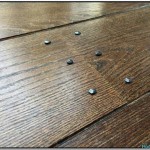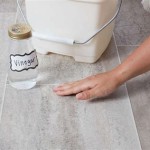Removing vinyl flooring can seem like a daunting task, but with the right tools and knowledge, it can be done quite easily. In this article, you will learn the steps to take when removing vinyl flooring, as well as the tools and materials that you will need. With the help of this guide, you will be on your way to replacing your vinyl flooring in no time.
Step 1: Prepare the Room
Before you begin removing your vinyl floor, you will need to make sure that the room is properly prepared. Start by removing all furniture, decorations, and other items from the room. Then, check to make sure that the floor is clean and free of debris. Once the room is clear, you can begin the process of removing the vinyl flooring.
Step 2: Remove the Trim
The next step when removing vinyl flooring is to remove the trim. Start by prying up the molding or baseboard trim from the walls. Be sure to use a putty knife or flathead screwdriver to do this, as it will prevent damage to the walls. Once the trim is removed, you can begin to remove the vinyl flooring.
Step 3: Remove the Vinyl Flooring
Now that the trim is removed, you can begin to remove the vinyl flooring. Start by cutting the vinyl into smaller sections with a utility knife. This will make it easier to remove the pieces. Once the sections are cut, use a pry bar to remove the pieces of vinyl. Be sure to wear safety glasses and gloves to protect yourself from the sharp edges of the vinyl. Once the vinyl is removed, you can move on to the next step.
Step 4: Clean the Subfloor
After the vinyl flooring has been removed, it is time to clean the subfloor. Start by sweeping away any debris that may have been left behind. Then, use a damp cloth and some mild detergent to clean the surface. Once the subfloor is clean, you can move on to the next step.
Step 5: Prepare the Subfloor for Installation
Before you can install a new floor, you will need to prepare the subfloor for installation. Start by checking for any signs of damage or wear. If the subfloor is damaged, you will need to repair it before moving on. Once the subfloor is in good condition, you can start to install the new floor.
Step 6: Install the New Floor
Now that the subfloor is prepared, you can begin to install the new floor. Start by laying down the underlayment, which will help protect the new floor from moisture. Then, lay down the new flooring according to the manufacturer’s instructions. Once the floor is installed, you can move on to the next step.
Step 7: Replace the Trim
The final step when removing vinyl flooring is to replace the trim. Start by measuring the trim and cutting it to size. Then, use a nail gun or hammer and nails to secure the trim in place. Once the trim is in place, your new vinyl floor is ready to use.
Removing vinyl flooring can seem like a difficult task, but with the right tools and knowledge, it can be done quickly and easily. By following the steps outlined in this guide, you will be able to remove your vinyl flooring and replace it with a new one in no time. Good luck!










/RemovingVinylFlooringwithaHeatGun-5b56475fc9e77c00371d7b7b.jpg)
Related Posts








